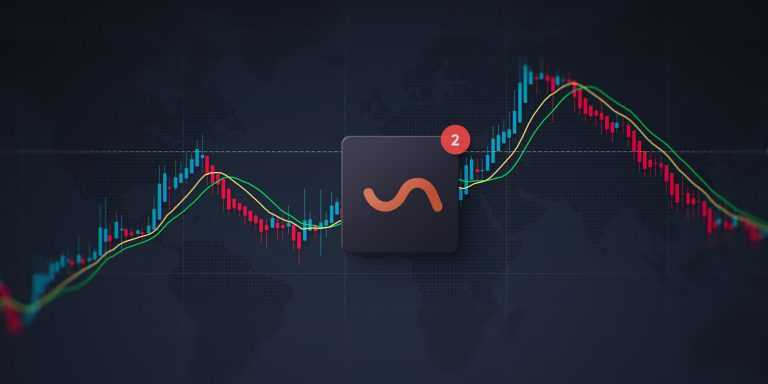As the most basic trading tool there is, Moving Average (MA) has many fans. Traders use it for its compatibility with other indicators — it compliments many strategies well and can be used on any trading instrument. There are many Moving Averages strategies: for example, traders may use MAs as a support for oscillating indicators. The universality of these indicators may allow for usage of Moving Averages for day trading, as well as for trading on longer timeframes.
Moving Averages can also be combined with each other. This indicator is based on a calculation of the average price on the chart. By using several Moving Averages and setting different time periods for them, it might be possible to get a better understanding of the prevailing trend and make decisions regarding trade entries and exits.
There are many ways to combine Moving Averages. One of the approaches requires just two MAs, which makes it available even to novice traders.
Double Moving Averages approach
This method calls for two Exponential Moving Averages (EMAs) set with two different periods: 100 and 14. This way, a trader operates with a very smoothed 100-period EMA, which reflects the market movement on a bigger scale, and a fast 14-period EMA, that responds to the short-term trend.
The Double Moving Averages approach cannot give any concrete guarantee of positive outcomes or success. Since the market can be quite unpredictable, there is no sure way to know what will happen next. However, this approach is an enhancement of a standard Moving Average crossover, and since a rollback of the price is taken in consideration, this method might potentially allow a trader to enter a trade with better price conditions without this being guaranteed.
The set up
The Double Moving Averages approach might be an introduction to using indicators with custom settings for those who are used to the default settings. To set up two Moving Averages with different time periods, first find the Moving Average indicator in the indicators menu in the left bottom corner of the traderoom.
In the above described approach two Exponential Moving Averages are used (EMAs), so it is necessary to change the type of the indicator to EMA in the settings. Set one EMA with a 14 period and the other EMA with a 100 period. Change the color of the line, if it is needed for convenience.
Once the two EMAs are applied to the chart, it is time to read their signals.
Usage & examples
Using this approach, possibilities of buying are potentially presented in the following circumstances:
- Both the 14-period EMA and the asset price cross and stay above the 100-period EMA
- The price of the asset bounces back and touches or dips below the 14-period EMA. This short rollback might allow a trader to enter the deal at a lower price
- The first bullish candlestick after the dip should close slightly below or above the 14-period EMA. Once the candle closes, it might be an entry opportunity.
A selling opportunity might be presented in the opposite situation:
- The 14-period EMA as well as the price chart cross and stay below the 100-period EMA
- The price chart bounces upwards, touching or re-testing the 14-period EMA. The candlestick can lightly touch the 14-period EMA or close above it — in this case, the trader might be able to enter the deal at a better (higher) price
- The trader may enter the deal once the first bearish candlestick after the bounce closes.
Conclusion
The Double Moving Average approach requires minimal settings, but it is capable of providing a trader with a lot of information regarding the direction of a trend. Still, traders have to be attentive and disciplined when operating with any trading method, as there is always risk involved.

